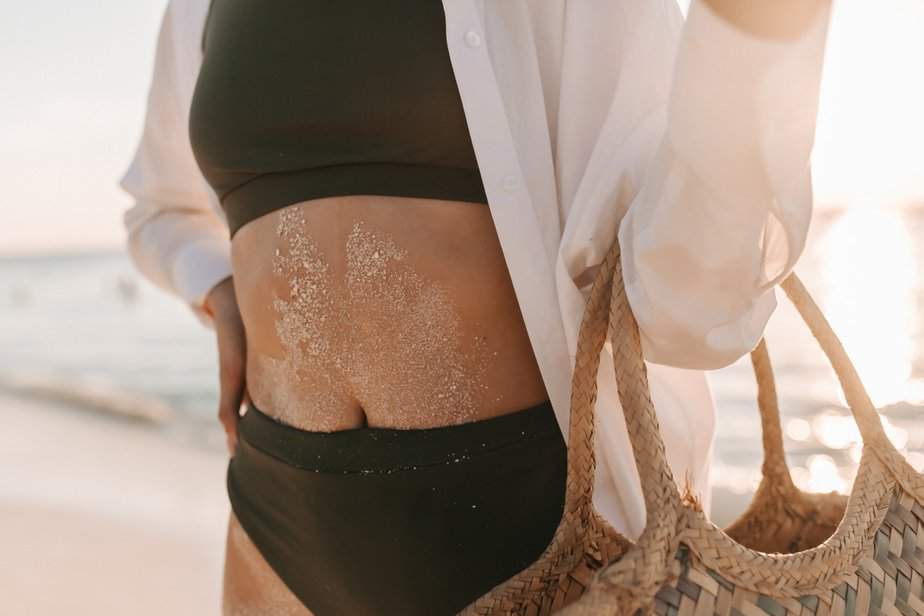Do you remember in the second movie of the Star Wars prequel trilogy when Anakin Skywalker said: “I don’t like sand. It’s coarse, and rough, and irritating, and it gets everywhere”? When I first heard this cheesy line, while everybody was cringing beside me in the theaters, the thought going through my head was: he’s not wrong. I felt a real kinship with Anakin; when sand gets stuck in my swimsuit, gets everywhere, or stains my swimsuit, my rising anger makes me feel like I’m going down the path to the dark side of the Force as well.
Many people have a love/hate relationship with sand. It can be the most relaxing thing in the world when you’re laying on it and sunbathing, or when you’re walking along the shore with a significant other or even just by yourself. The problem is when it gets stuck in your swimsuit and chafes against your skin, or when it makes a mess in your car. How the heck can we make sure that the sand stays on the beach and doesn’t go anywhere it shouldn’t?
Getting rid of the sand in your swimsuit involves taking immediate action, making sure to brush/shake off as much of it off your bathing suit quickly and rinsing it in the shower before it cakes on. You may also have to scrub it while rinsing if it’s really stubborn, and make sure to scrub both the inside and outside. Afterwards, you need to dry your swimsuit before you give it one final shake to ensure all the sand is removed.
If you are unsure about how to get sand and sand stains out from your bathing suit, keep reading on where I will provide detailed instructions on how you can do exactly that.
Shake as much sand off as you can
If you’re changing right on the beach, then take off your swimsuit and give it a good shake right then. It will be harder to get sand off a damp swimsuit, but if it’s even a little bit dry, then you can shake off a good deal of sand. Just do a quick flicking motion with your wrist, making sure not to hit it against any surfaces which could damage it.
Do this for the sand on the outside, then turn it inside out and repeat the process to get rid of some of the sand on the inside. You can also just hold the swimsuit up with one hand and pat it down with your free hand, or use a soft-bristled brush if you have one.
Rinse with cold water
After shaking off as much sand as you can, or if you’re still wearing your swimsuit, head back to the beach showers or your hotel room and begin rinsing it with cold water. Do not leave it soaking in a sink unless the sand is caked on; otherwise, the sand will just be floating in the sink/basin and can get stuck on your swimsuit once again. Instead, rinse it under running water so that the sand washes away.
Systematically run every square inch of that swimsuit under running water, making sure to focus on areas where sand can easily be trapped, such as along seams, straps, and the gusset of your bathing suit. Repeat this process for both the inside and outside.
Keep running your swimsuit under the cold water until the running water is clear or you can visibly cannot see anymore sand on your swimsuit.
For the purposes of removing sand, soap or detergent does nothing. That said, it’s still a good idea to use swimsuit detergent or soap to clean your swimsuit of any salt, sunscreen, spills, or anything else that can cause a stain. It also prevents your swimsuit from smelling foul and gets rid of lingering bacteria that can lead to mold growth.
Air dry by laying flat
Once you are reasonably sure that there are no more sand particles on your swimsuit, you should gently squeeze as much water out before laying it on a flat surface to air dry.
Resist the urge to twist the water out; while effective, it causes significant wear and tear on the swimsuit fabric and can cause wrinkles. Instead, you should press or roll the water out. This can be accomplished by putting the swimsuit between two dry towels on the floor and stepping on it. Another way is to lay the swimsuit on top of a dry towel and then roll the towel up (with swimsuit inside).
Once the excess water has been squeezed out, you can lay your damp swimsuit on a dry towel or drying rack to air dry. Make sure the room is well-ventilated and that the swimsuit is out of direct sunlight. Since swimsuits are made with quick-drying materials such as spandex, nylon, and polyester, it shouldn’t take too long to dry unless you’re in a humid location.
To speed up the drying process, you can blow a fan directly at it. Some people suggest using a blow dryer at a low heat setting to not only dry it, but to also blow off any remaining sand, but this is risky. Any heat (e.g. from the dryer, blow dryer, or heat dish) can potentially cause the synthetic materials to shrink, which is an even worse issue than some specks of sand.
Give it another shake
Finally, with the swimsuit fully dried, you can give it one last shake for good measure. You may be surprised to find some specks of sand falling out because it can’t cling to any moisture anymore.
Once again, check the most common areas where sand can get trapped such as along seams or the gusset area. If there are still a lot, consider rinsing it again under running cold water and keep repeating the rinsing, drying, and shaking process until no more specks of sand remain.
Avoid white bathing suits
If you are afraid of how easily white bathing suits appear dirty, then you’re going to hate when sand gets on it when it’s wet. The sand will stick on it like magnets to a fridge and it’s going to be very visible on a white bathing suit. To be fair, sand is visible on any other colored bathing suit as well, but doubly so on a white one. If this is a concern, don’t wear a white bathing suit.
How to prevent sand from getting stuck in the first place

I feel like knowing how to clean the particles of sand from your swimsuit is only half the battle. You would be much better equipped to handle this in the future if you knew how to limit so much sand getting trapped in the first place.
Really, it’s just common sense. Don’t do any activities that can expose your swimsuit to sand, otherwise be prepared for an arduous cleanup process afterwards.
For example, don’t let yourself be buried under sand (don’t fall asleep on the beach if you have cheeky friends), try not to roll around on the sand (don’t do any dives when playing beach volleyball), and always lay down on a towel.
We aren’t the fun police, so if you still want to do all of that, then go ahead. That said, if you’ve ever had the displeasure of getting sand everywhere and being forced to clean it up, it might make you think twice next time.
What’s the big deal about sand?

You might be wondering if I’m blowing this sand issue way out of proportion. How can a few specks of sand on a swimsuit warrant cause such anguish? The short answer is: it can cause discomfort, chafing, stains, and possibly even skin infections. Let’s go over each problem.
Discomfort
If you’re lucky, the only problem you’ll have is mild discomfort. The sand will rub annoyingly against your skin after it sticks on your swimsuit, and depending on how much (and where) it is, the discomfort can range from being barely noticeable to “get these dang things off me right now.”
As an example of the latter, imagine if sand gets stuck in the gusset (crotch area) of your swimsuit. Are you really okay with sand rubbing against your genitals? I thought not.
Chafing
In increasing annoyance, the next step up is when sand starts to chafe painfully against your skin. This can happen if the sand is trapped against your swimsuit and skin and has had a chance to rub against your skin for hours. Soon, you will find the pain too much to ignore, and you will find that your skin has been rubbed raw.
The chafing can be worsened by heat and salt/sweat which feels like rubbing salt in your wound because that is literally what’s happening. If you don’t deal with the source of friction (i.e. the sand), then these tiny wounds can expand, leading to tears and inflammation. Your skin will look red, swollen, and broken. Not a good look.
Once chafing has progressed to that point, your skin will be extremely sensitive, even later at night. When you run water over it, it will sting painfully, and even touching normal clothing will be a painful sensation. If you happened to be on an extended vacation where you planned on being on the beach everyday, you might not be healed enough to do any outdoor activities the next day.
Skin infections
Once your skin has been torn from chafing against the sand, these open wounds are susceptible to infections. To prevent that, be extra vigilant about rinsing sand away from the wound and disinfecting it.
Parting words
Sand is a lot like glitter; it’s all fun and games until you find it everywhere (and I mean everywhere) and are struggling to clean it all up. However, if you are cognizant of how much of a hassle they can be to clean up, and you follow the tips laid out in this article to limit how much sand your bathing suit is exposed to, then the clean up will be a breeze.
If you are on an extended vacation where access to your usual cleaning amenities is limited, it’s a good idea to bring multiple swimsuits just in case. That way, you don’t have to stress so much about getting your worn swimsuits washed and dried before your next visit to the beach if you have a fresh swimsuit ready to go.
Let sandy beaches be something you look forward to visiting, rather than something you dread due to the awful clean up you will endure afterwards. By being vigilant, you can easily get all of the sand out of your swimsuit long before it stains your swimsuit or rubs your skin raw.


